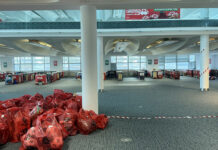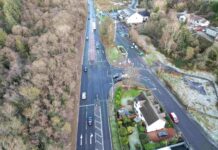
NETWORK Rail has awarded a contract to a consortium led by Thales Ground Transportation Systems to use fibre-optic technology to boost safety and performance on the railway.
The project will see fibre optic acoustic sensing (FOAS) technology developed, which will be ‘enriched’ with data fusion to enhance the ‘listening’ capabilities of optical fibres – of which, there are already around 20,000 kilometres running alongside Britain’s railways.
The resulting technology is described as effectively being a ‘virtual microphone’ which has the potential to enhance remote condition monitoring of assets, as well as providing valuable data to improve train performance and reduce disruption for passengers.
The contract award follows a design contest launched in November 2020, led by Network Rail in collaboration with Dutch rail infrastructure operator, ProRail, which challenged over 40 suppliers of different sizes to come up with proposals for a funded 12-month outcome-focussed trial of FOAS, IoT sensors and smart CCTV cameras, amalgamated through intelligent data fusion and processing.
The trial work with Thales’ successful bid – featuring a consortium comprising SMEs to deliver different parts of the technology – will be conducted at Network Rail’s RIDC Melton test track, and on the mainline railway from Melton Mowbray to Leicester, commencing in Autumn 2021.
The design contest also formed part of an existing agreement between Network Rail and ProRail to collaborate on research and development opportunities. The two companies signed a Memorandum of Understanding in March 2019 which illustrated a commitment to work together and share expertise to solve challenges faced by the railway.
Huw Evans, Network Rail’s R&D portfolio programme manager, said, “This is a brilliant example of collaboration between Network Rail and ProRail to research and develop solutions to problems that are common to us both, and we look forward to working closely with the Thales-led consortium. RIDC Melton and the adjacent main line provide the perfect operational scenarios for us to safely and expertly test the technology and fully evaluate its potential.”











